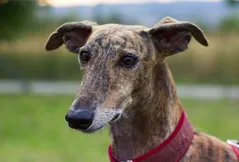
Miniature Schnauzer
The Miniature Schnauzer is a smart looking little dog. He has an outgoing, friendly personality, a portable size, and sporty good looks.
Overall Status
| Height | 12 to 14 inches |
| Temperament | Friendly, Smart, Obedient |
| Weight | 11 to 20 pounds |
| Life Expectancy | 12 to 15 years |
| Coat Color | Black, Silver, White |
| Barking Level | Frequent |
Quick Factors
| Playfulness | |
| Dog Friendly | |
| Exercise Need | |
| Grooming Needs | |
| Strangers Friendly | |
| Family Affectionate |
Daily Care
Grooming Tips
To stay looking handsome, Miniature Schnauzers need to be groomed every five to eight weeks. Many owners prefer to use the services of a professional groomer, as properly clipping a Schnauzer can be tricky. Show dogs need to be hand-stripped, which is a time-consuming process and is unnecessary for dogs who will not be shown.It is important to brush a Schnauzer two to three times per week to prevent mats. The reason this breed doesn't shed is that the undercoat gets caught in the topcoat, so the loose and dead hair must be brushed out, in order to remove it. Wash the dog's beard after mealtime, to remove food, prevent tangles and keep him looking and smelling fresh.Check the Miniature Schnauzer's ears on a regular basis for signs of wax buildup, irritation or infection. Clean the ears with a cotton ball and a veterinarian-approved cleanser; never use a cotton swab in a dog's ear canal. Teeth should be brushed on a weekly basis to prevent tartar buildup, promote gum health and keep bad breath at bay. Trim nails monthly if the dog does not wear the toenails down naturally outdoors.
Exercise Tips
Alert and lively, Miniature Schnauzers require regular dailyexerciseto maintain their mental and physical health. They have a medium energy level and can easily adapt to city or country living.The breed benefits from having a fenced area where they can run and chase a ball safely and enjoy playtime with their owner. Their greatest joy is to be with their family and doing activities together.Miniature Schnauzers have a strong prey drive, so they should never be allowed off leash when not in a fenced area, as they might not resist the urge to chase after small animals.
Feeding Tips
Like many smaller breeds, it’s easy to coddle the Miniature Schnauzer with a lot of food and too little exercise, particularly if you live in the city. That’s why it will be important that you regulate its diet: give them plenty of exercise and don’t let them eat too much.To give your Miniature Schnauzer plenty of good nutrition, be sure to try cooking for it a while, mashing in chopped vegetables along with bits of meat to ensure it’s getting all the vitamins and minerals it needs. They should do well on high-quality dog food, whether commercially manufactured or home-prepared with your veterinarian’s supervision and approval. Any diet should be appropriate to the dog’s age (puppy, adult, or senior).Treatscan be an important aid in training, but giving too many can cause obesity. Learn about whichhuman foodsare safe for dogs, and which are not. Check with your vet if you have any concerns about your dog’s weight or diet.Clean, fresh water should be available at all times.
Health Tips
The Miniature Schnauzer is a long-lived breed, with an average life expectancy of 14 to 15 years. Breed health concerns may includeallergies, canine neuronal ceroid-lipofuscinosis,Cushing’s disease,diabetes, epilepsy, congenital idiopathic megaesophagus, hemorrhagic gastroenteritis, myotonia,patent ductus arteriosus, pulmonic stenosis, portosystemic shunts,keratoconjunctivitis sicca (“dry eye”), lens luxation,cataracts,progressive retinal atrophy, renal dysplasia, retinal dysplasia, hyperlipidemia,melanoma, canine cutaneous histiocytoma, Schnauzer comedo syndrome,seizures (“fly-biting” and “star-gazing”), urolithiasis (urate, calcium oxalate, struvite, calcium phosphate, silica) andcryptorchidism (undescended testicles).
Trainability
Miniature Schnauzers can be highly responsive to training but can also have a bit of an independent streak that will be a little troublesome for first-time dog owners. Luckily, the Miniature Schnauzer has a reputation for being obedient to commands even if you’re not a particularly skilled dog trainer.These types of dogs will make excellent pets thanks to their personality. But don’t let that be a reason you ignore the dog training itself. Put in some time and effort, mix in some patience, and you might be surprised at the kind of results you can elicit from this friendly breed.
History
The Miniature Schnauzer is a German breed. During the years around the turn of the century, both smoothGermanPinscher andcoarse-haired Schnauzer pups appeared in the same litters. The German Pinscher Schnauzer Club initiated a policy requiring proof of three generations of pure coarse-haired Schnauzer coats for registration.This quickly helped set type and made them a distinct breed from the German Pinscher. These Schnauzers were given the nameStandard Schnauzer. Miniature Schnauzers were developed by crossing small Standard Schnauzers with the Affenpinscher and possibly thePoodle. The Schnauzer name derived from the German word "Schnauze," which means "muzzle." It was used as a ratter and still retains the ability, but is mostly a companion dog today. Some of the Schnauzer's talents include hunting, tracking, ratter, watchdog, competitive obedience and performing tricks.






